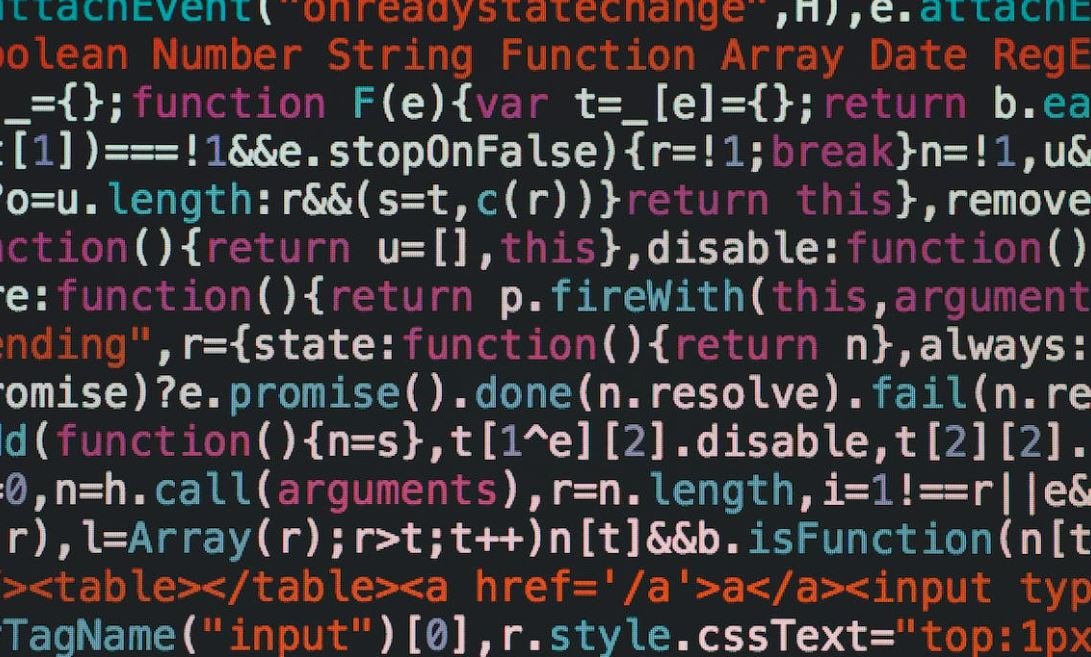Film Is Better Than Digital
In the age of digital photography and cinematography, the debate between the use of film and digital technology continues to divide professionals and enthusiasts alike. While digital technology offers convenience and instant results, traditional film has unique qualities that still make it a preferred choice for many.
Key Takeaways
- Film captures images and retains details with greater depth and dynamic range.
- Shooting film encourages a slower, more deliberate approach to photography or filmmaking.
- Digital images can be easily manipulated, but film retains a timeless quality that cannot be replicated.
- Using film requires mastery of technique, resulting in a stronger understanding of the craft.
The Superiority of Film
One of the primary advantages of film over digital is its ability to capture images and retain details with greater depth and dynamic range. Film has a natural ability to capture a wider tonal range, from deep shadows to bright highlights, which results in more visually pleasing and realistic images. Additionally, film grain adds a unique aesthetic quality, while digital noise can detract from the overall composition.
Another advantage of shooting film is that it encourages a slower, more deliberate approach to photography or filmmaking. With limited shots per roll, photographers and filmmakers must carefully consider each frame, which fosters a greater appreciation for the art and helps to develop a refined eye for composition. Digital photography, on the other hand, allows for rapid-fire shooting with little consideration for each shot’s quality or significance.
While digital images can be easily manipulated and altered using various software tools, film retains a timeless quality that cannot be replicated. A well-developed film negative or positive can be printed or scanned multiple times, preserving its original look and feel. This characteristic is especially valuable when creating fine art prints or producing archival-quality work that stands the test of time.
Using film requires mastery of technique, as it leaves little room for error. This necessity for precision and control fosters a stronger understanding of the craft and encourages photographers and filmmakers to develop their skills. Each film stock has its own unique characteristics, and professionals must learn to manipulate exposure, development times, and editing to achieve the desired results, resulting in a more nuanced and refined approach to the medium. In contrast, digital technology allows for quick fixes and adjustments without the same level of technical expertise.
Comparing Film and Digital: The Numbers
| Aspect | Film | Digital |
|---|---|---|
| Resolution | Varies, dependent on film type | Increasing, up to 8K and beyond |
| Dynamic Range | 10-15 stops | Average 8-12 stops |
| Grain/Noise | Organic film grain | Digital noise |
The Future of Film
Despite the advancements in digital technology, film continues to thrive in various sectors of the industry. Many renowned filmmakers, cinematographers, and photographers still embrace film for its unique qualities and the artistic challenges it presents. Film has persisted for over a century and is likely to continue as a niche medium, valued for its distinctive, timeless look.
The debate between film and digital will undoubtedly continue as technology evolves. However, it is important to recognize that both mediums have their strengths and applications. So, whether it’s the classic charm of film or the convenience of digital, it’s ultimately a matter of personal preference and the desired aesthetic or outcome.

Common Misconceptions
Misconception 1: Film captures more detail than digital
One common misconception among film enthusiasts is that film has a higher resolution and can capture more detail than digital cameras.
- Digital cameras have significantly higher resolution than film, with some reaching up to 100 megapixels.
- Digital cameras can produce sharper images due to advanced image processing algorithms.
- Film grain can actually reduce the level of detail in the final image, especially noticeable when enlarging prints.
Misconception 2: Film has superior dynamic range compared to digital
Another belief held by some is that film has a wider dynamic range, meaning it can capture a greater range of tonalities than digital sensors.
- Modern digital cameras have made tremendous advancements in dynamic range and can capture a wide range of highlights and shadows.
- Film can be prone to overexposure, resulting in lost details in the highlights, while digital sensors handle exposure much more reliably.
- Raw files from digital cameras can be effectively edited to recover details from overexposed or underexposed areas.
Misconception 3: Film has a more pleasing and unique aesthetic
Some film enthusiasts argue that film has a distinct and more visually appealing aesthetic compared to digital images.
- Advancements in digital post-processing tools and software allow photographers to replicate various film aesthetics.
- Digital cameras offer users the ability to choose from various presets and filters to achieve a desired aesthetic.
- The preference for film aesthetics is subjective, and many people find digital images equally appealing or even more visually striking.
Misconception 4: Film is more reliable and durable than digital
There is a belief that film equipment is more reliable and durable compared to digital cameras and is less likely to fail during a shoot.
- Digital camera technology has improved significantly, and modern cameras are built to withstand various environmental conditions.
- Digital cameras provide instant feedback, allowing photographers to detect and resolve technical issues while shooting.
Misconception 5: Film photography is more authentic and requires greater skill
Some believe that shooting with film requires more skill and effort, and the result is a more authentic representation of the subject.
- Both film and digital photography require skill and understanding of composition, lighting, and other technical aspects.
- Digital photography provides instant feedback, allowing photographers to experiment and learn from their mistakes more effectively than with film.
- The authenticity of a photograph depends on the photographer’s vision and skill, rather than the medium used.

Film Is Better Than Digital
The debate between film and digital photography has been ongoing for years. While digital cameras have become more advanced and popular in recent times, many photographers and filmmakers still argue that film provides a unique charm and quality that cannot be replicated digitally. Here are 10 interesting points highlighting why film is considered superior to digital.
Theatrical Releases
Traditionally, films were shot on celluloid and projected in theaters using projectors. Even today, many prestigious film festivals and cinema houses prefer to showcase movies shot on film. The distinct grain, color rendition, and overall aesthetic of film can create an immersive experience for the audience.
| Film | Digital |
|---|---|
| Often preferred for theatrical releases | Most common in mainstream commercial filmmaking |
| Unique aesthetic with film grain and color rendition | Smooth, crisp images |
Archival Quality
For long-term preservation, film is the preferred medium. The durability of the physical film stock ensures that movies shot on film can be stored for many years with minimal deterioration. Digital files, on the other hand, require consistent migration to new storage technology to avoid obsolescence.
| Film | Digital |
|---|---|
| Physical film stock can last for decades | Digital files require constant migration |
| Minimal deterioration over time | Risk of obsolescence |
Dynamic Range
Film offers a greater dynamic range, capturing subtle details in shadows and highlights without losing information. This wide latitude allows for better exposure control and greater flexibility during the post-processing stage.
| Film | Digital |
|---|---|
| Higher dynamic range | Restrictions in dynamic range |
| Retains details in shadows and highlights | May lose information in extreme highlights or shadows |
Film Emulsions
Film emulsions have distinct characteristics that photographers and filmmakers can choose to suit their artistic vision. Each emulsion has unique color rendition, contrast, and grain structure, allowing for creative expression and a truly personalized style.
| Film | Digital |
|---|---|
| Wide variety of film emulsions | Predefined color profiles with limited customization |
| Artistic expression through emulsion choice | Consistent, predictable output |
Tactile Experience
Handling physical film and working with analog cameras provides a tactile experience that digital equipment lacks. The mechanical process of loading film, adjusting manual settings, and developing the film creates a deeper connection between the photographer/filmmaker and their art.
| Film | Digital |
|---|---|
| Tactile experience in working with physical film | Operated electronically |
| Mechanical process creates a deeper connection with the art | Efficient and convenient |
Special Effects
While digital effects have revolutionized the film industry, many filmmakers still prefer practical special effects achieved with film. Techniques such as stop-motion animation and in-camera effects produce a unique, tangible quality that digital counterparts may struggle to replicate.
| Film | Digital |
|---|---|
| Preferred for practical special effects | Digital effects dominate the industry |
| Unique tangible quality | More technically advanced effects |
Intimacy
Photographing or filming with a limited number of frames on a roll of film encourages photographers and filmmakers to be more intentional with each shot. This limitation cultivates a sense of discipline and mindfulness, resulting in a higher level of engagement with the subject.
| Film | Digital |
|---|---|
| Limited frames per roll increases intentionality | Unlimited digital storage encourages rapid shooting |
| Enhanced discipline and mindfulness | Lack of constraint may lead to less consideration |
Image Longevity
As technology improves, digital formats and file types change. This can result in the loss or inaccessibility of older digital images if they are not regularly migrated to new formats. In contrast, well-preserved photographic prints from film negatives can last for generations.
| Film | Digital |
|---|---|
| Prints from film negatives can last for generations | Old digital files may become inaccessible |
| Ensured image longevity | Risk of losing older digital images |
Authenticity
The imperfections and idiosyncrasies of film capture give the medium an authentic, nostalgic feel. Grain, light leaks, and other quirks can evoke emotion and a sense of time, making film a choice for photographers and filmmakers aiming for a unique and genuine result.
| Film | Digital |
|---|---|
| Imperfections provide an authentic and nostalgic feel | Consistently clean and polished digital images |
| Elicits emotion and evokes a sense of time | May lack the charm of imperfections |
Summary
While digital photography and filmmaking have undoubtedly advanced the field in numerous ways, film remains a preferred medium for many professionals and enthusiasts. Its unique aesthetic, archival quality, dynamic range, and ability to create a tactile experience all contribute to its appeal. Additionally, the variety of film emulsions, practical special effects, and limitations that encourage artistic intentionality further strengthen the argument for film. Ultimately, the choice between film and digital will depend on the photographer or filmmaker’s artistic vision and personal preference.
Frequently Asked Questions
Is film really better than digital?
Film and digital both have their pros and cons, but many film enthusiasts argue that film has a unique aesthetic and provides a more authentic and artistic experience compared to digital photography.
What is the difference between film and digital photography?
Film photography captures images using light-sensitive film, which is then developed and printed. Digital photography uses electronic image sensors to capture and store images as digital files.
Why do some people prefer film over digital?
Some photographers prefer film because it offers a nostalgic and timeless feel to their images. Film also has a wider dynamic range and better color reproduction in certain situations.
What are the advantages of shooting film?
Shooting film allows photographers to slow down and be more intentional with their shots as they have a limited number of exposures per roll. Film also offers unique grain and texture that is difficult to replicate with digital photography.
Is shooting film more expensive than digital?
Shooting film can be more expensive due to the costs of film rolls, developing, and printing. Digital photography, on the other hand, has lower upfront costs, but may require investment in higher-end equipment and storage solutions.
Does film have better resolution than digital?
In terms of resolution, digital cameras have surpassed film cameras in recent years. However, film can still offer a unique and pleasing quality that some photographers prefer over the ultra-sharp look of digital images.
How does film handle highlights and shadows compared to digital?
Film has a wider dynamic range, meaning it can handle a greater range of highlights and shadows compared to digital cameras. This allows for better detail retention in bright and dark areas of an image.
What is the lifespan of film compared to digital files?
Film negatives can last for decades or even centuries when stored properly. However, digital files can be easily corrupted or lost if not properly backed up and stored. It is important to have multiple copies and regularly migrate digital files to newer storage solutions.
Can film be digitally scanned and edited?
Yes, film can be scanned at high resolutions and then digitally edited using various software. This allows photographers to enjoy the benefits of both film and digital workflows, combining the unique qualities of film with the convenience of digital post-processing.
Is film making a comeback in the digital age?
While digital photography dominates the industry today, there has been a resurgence in film photography as more photographers are rediscovering the unique qualities and artistic possibilities that film offers.




